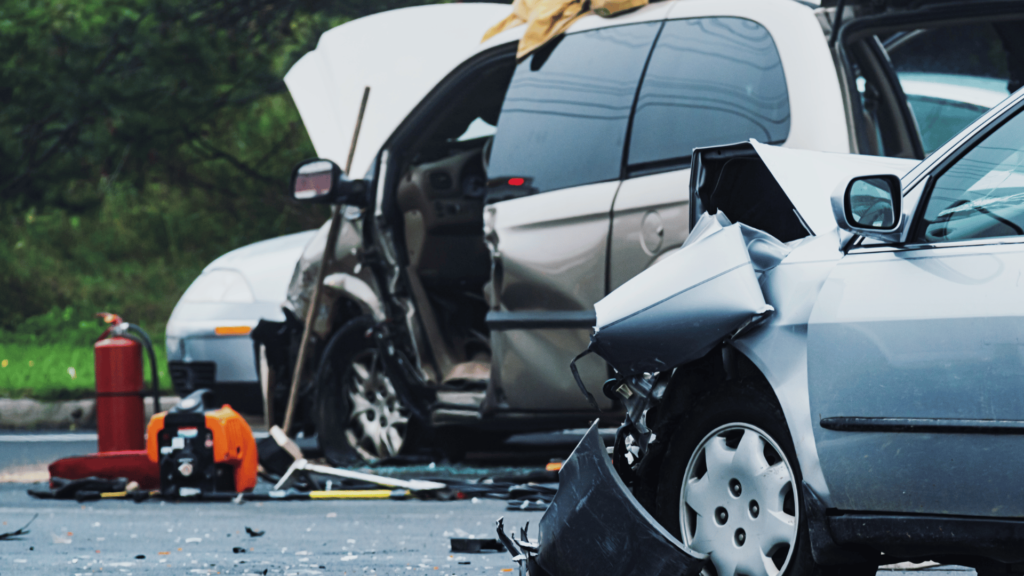Car accidents happen in a blink. One second you’re driving home, the next it’s crunching metal, airbags, and chaos. Those first few minutes before responders arrive can make all the difference. Here’s a calm, clear plan to keep you, and the injured, safer.
First Priority: Call 911 and Assess the Scene
- Call 911 immediately. Give location (nearest mile marker/landmark), number of vehicles/people, and obvious hazards.
- Scan for danger. Traffic, leaking fuel, smoke/fire, downed power lines, unstable vehicles, broken glass.
- Follow dispatcher instructions. Keep your phone on speaker if possible and stay on the line.
Your safety first, don’t become a second victim.
Step 1: Don’t Move the Injured Person (Unless There’s Immediate Danger)
Many crash injuries involve the head, neck, or spine. Moving someone can worsen harm.
- If the scene is safe, leave them where they are and encourage them to stay still.
- Reassure them: “Help is on the way. Try not to move your head or neck.”
- If there’s imminent danger (fire, smoke, water, oncoming traffic), move them only as far as needed to reach safety.
Step 2: Control Life-Threatening Bleeding
Uncontrolled bleeding can be fatal, but bystanders can make a huge difference.
- Use a clean cloth, bandage, or even clothing. Apply firm, steady pressure directly on the wound.
- If blood soaks through, don’t remove the first layer, add more on top and keep pressing.
- For limbs: if trained and supplies are available, apply a tourniquet 2–3 inches above the wound (not over a joint). Note the time.
Step 3: Keep the Person Calm, Warm, and Still
Shock is common after crashes and can worsen injuries.
- Speak slowly and calmly; make eye contact.
- Use a jacket/blanket to maintain body heat.
- Discourage eating/drinking and unnecessary movement.
Step 4: Check Breathing & Responsiveness, Start CPR if Needed
If someone is unresponsive:
- Check breathing (look, listen, feel) and a pulse if you’re trained.
- No normal breathing? Begin CPR:
- Adults: 30 chest compressions then 2 breaths. Depth ~2 inches (5 cm), rate 100–120/min. Allow full recoil.
- Untrained? Use hands-only CPR: hard, fast chest compressions at 100–120/min until help takes over.
- AED available? Turn it on, follow voice prompts, and resume compressions between analyses/shocks.
911 dispatchers can coach you through CPR, put the phone on speaker.
Step 5: Protect the Scene (If It’s Safe)
- Turn on hazard lights; set triangles/flares if trained and safe to do so.
- Ask bystanders to direct traffic from a safe distance, not from the roadway edge.
- Keep curious onlookers away from damaged vehicles and fuel leaks.
What to Avoid
- Don’t move the injured unless you must escape immediate danger.
- Don’t remove embedded objects from wounds.
- Don’t give food, drink, or alcohol.
- Don’t speculate about fault or severity, focus on care.
Prevention: Reduce Your Risks Before Accidents Happen
- Seat belts, very seat, every ride. They save thousands of lives annually.
- Skip distractions. Phone in “Do Not Disturb,” no texting, no multitasking.
- Emergency kit: First-aid supplies, gloves, flashlight, reflective triangles, water, blanket, portable charger.
- Vehicle upkeep: Brakes, tires, lights, wipers, small fixes prevent big problems.
The Human Side
Crashes are overwhelming, adrenaline spikes, decisions blur. A simple plan, call 911, keep victims still, control bleeding, start CPR if needed, turns panic into purpose. You don’t need to be a medic; you need a method and the willingness to act.
Build Skills That Travel With You
The same instincts that help on the roadside make workplaces safer, too: recognizing hazards, controlling bleeding, preventing shock, performing CPR. If you’re ready to build those muscles, explore our Workplace Safety: Crisis Management and Emergency Planning Training Course.
Pocket Checklist
- Call 911 & assess hazards.
- Don’t move the injured unless there’s immediate danger.
- Control bleeding with firm pressure (tourniquet if trained).
- Calm, warm, still.
- CPR/AED if no normal breathing (hands-only if untrained).
- Stay on the line with the dispatcher until responders arrive.
Disclaimer: This guide is for general education and is not a substitute for professional medical advice. In an emergency, call 911.
References
Q&A Section Takeaways
Q: What should I do first after a car accident?
A: Check for danger, call 911, and assess injuries. Stay calm, keep victims still, and only move them if the vehicle is unsafe.
Q: How can I give first aid before help arrives?
A: Stop bleeding with pressure, keep airways clear, and monitor breathing. Offer reassurance and stay with the injured until responders arrive.
Q: Why is car accident first aid important?
A: Quick, calm action before emergency services arrive can prevent shock, reduce injury severity, and even save lives.



